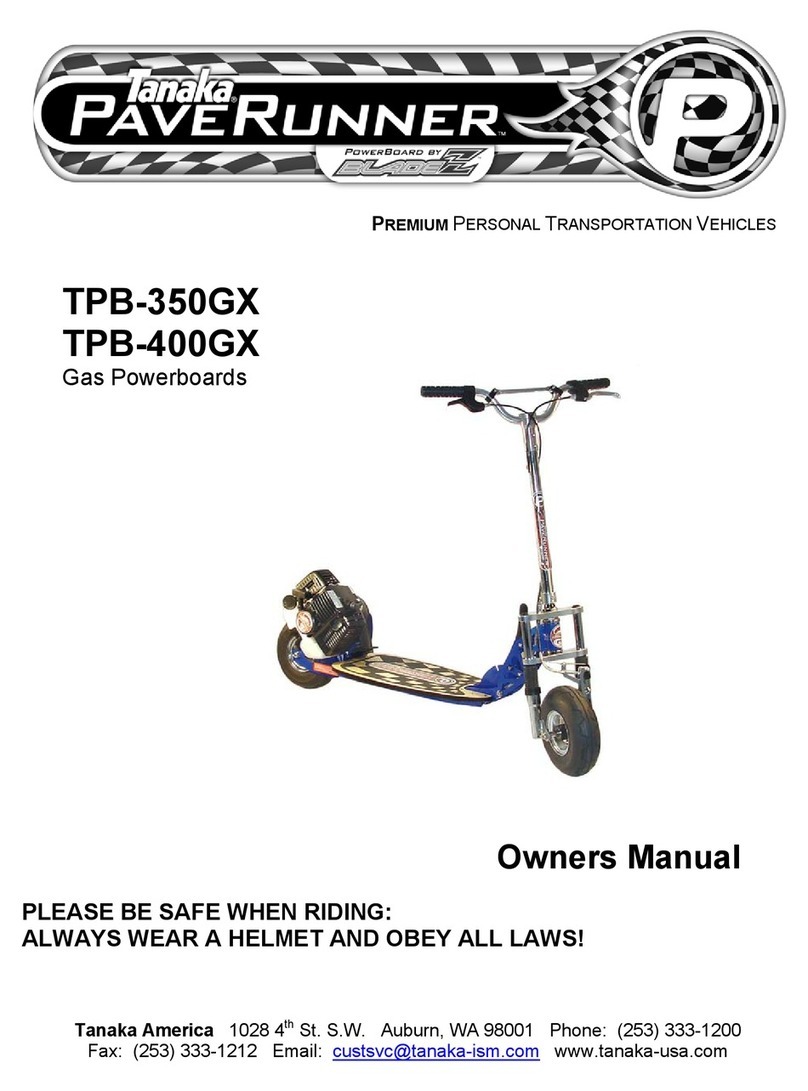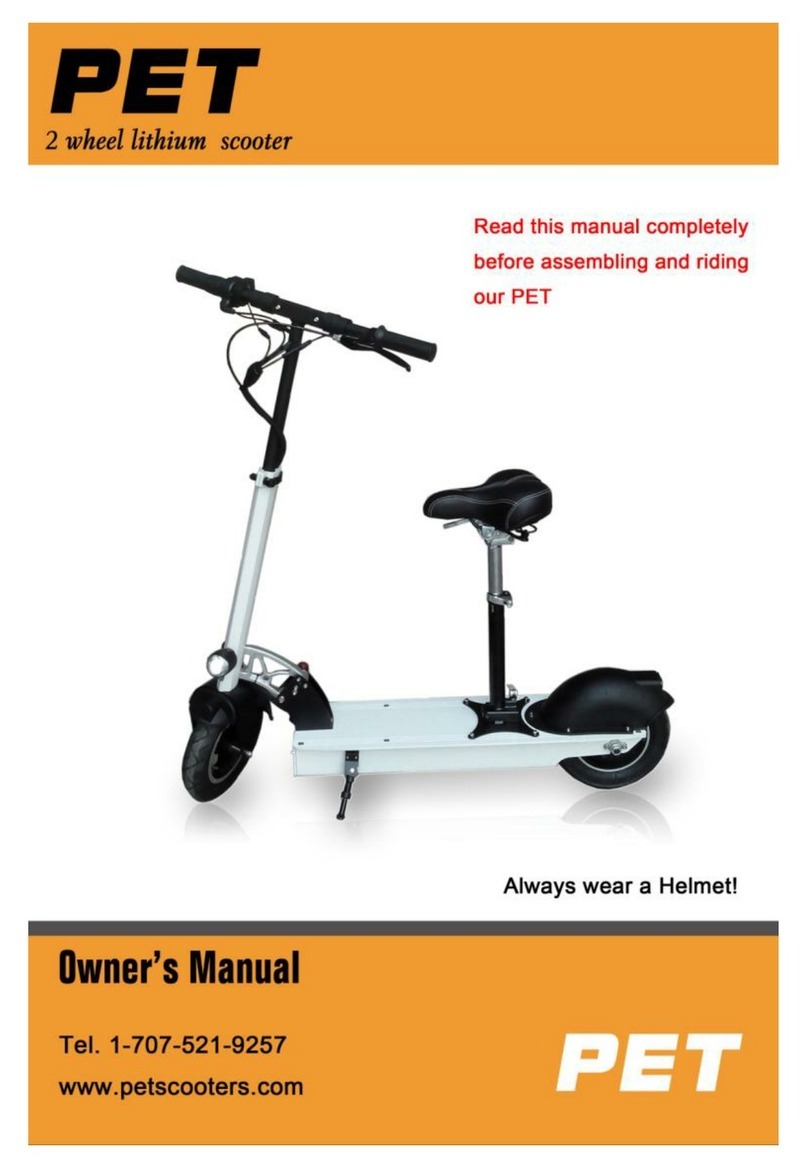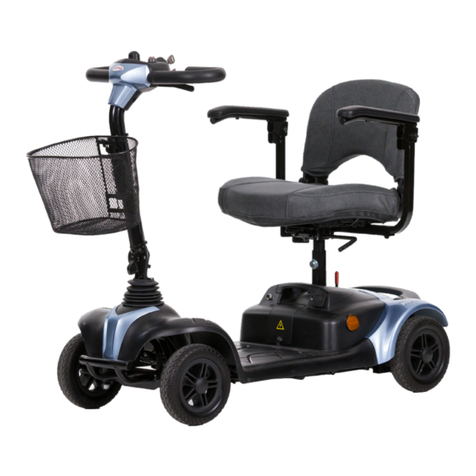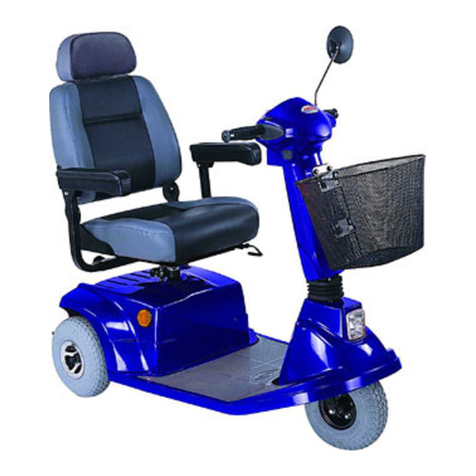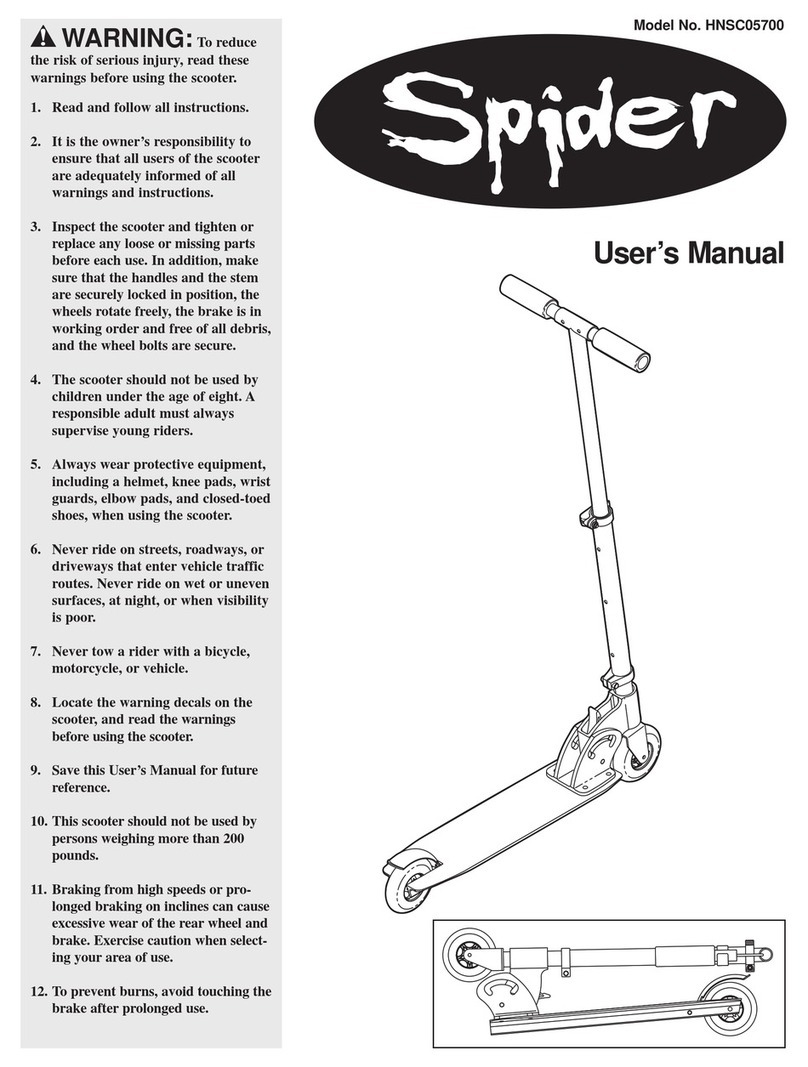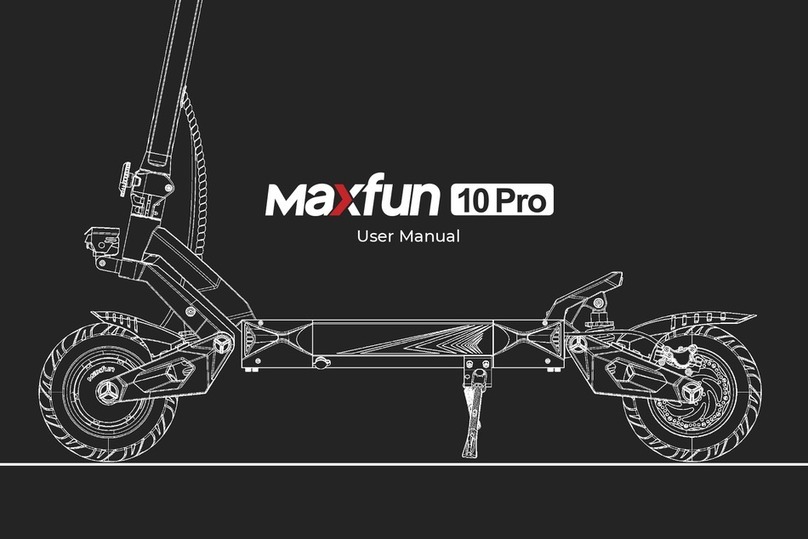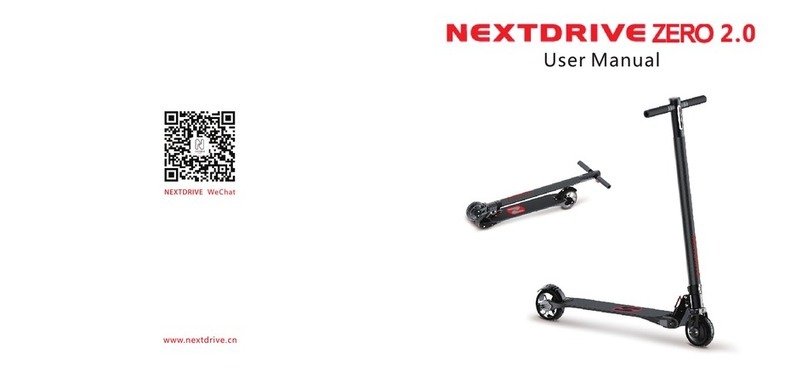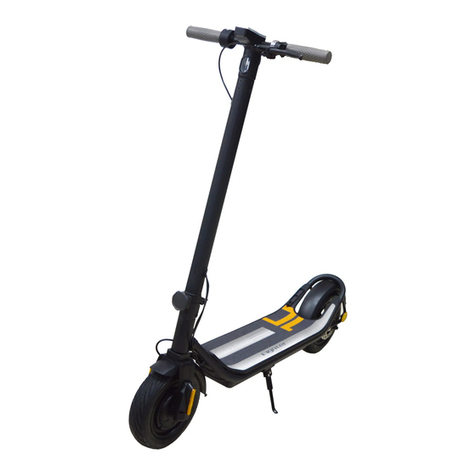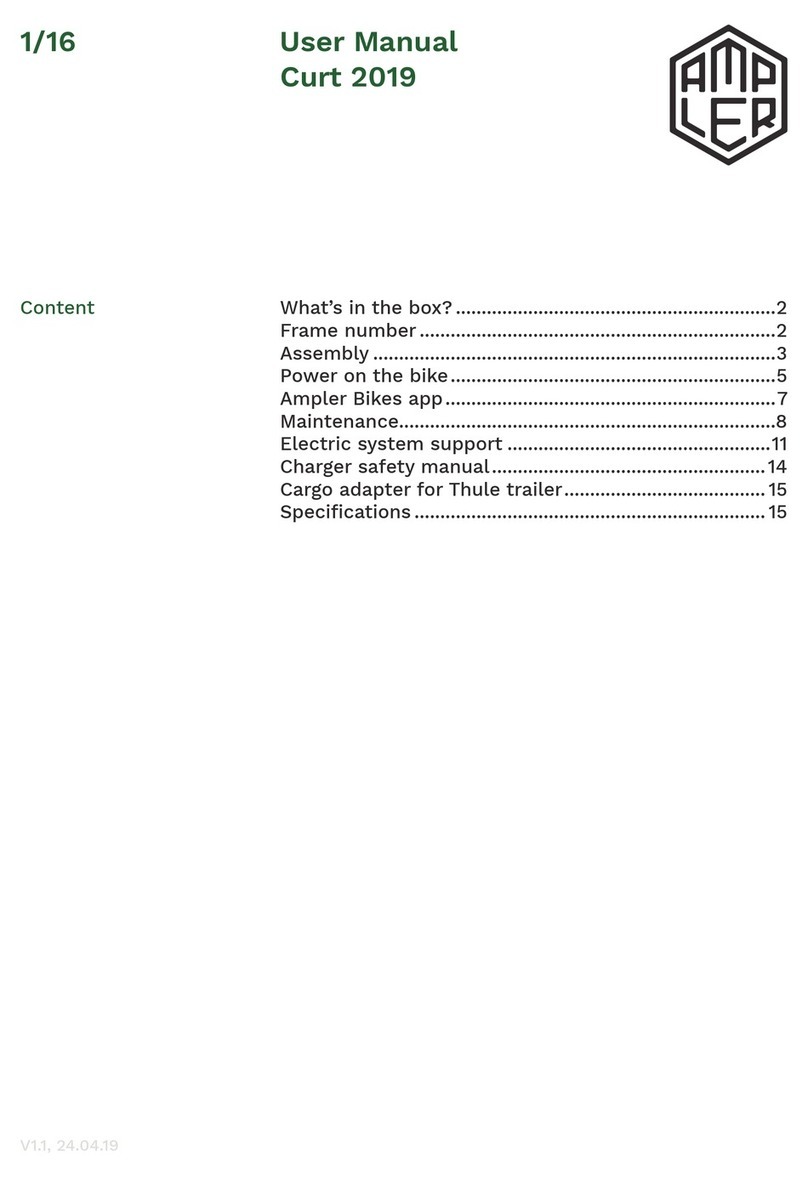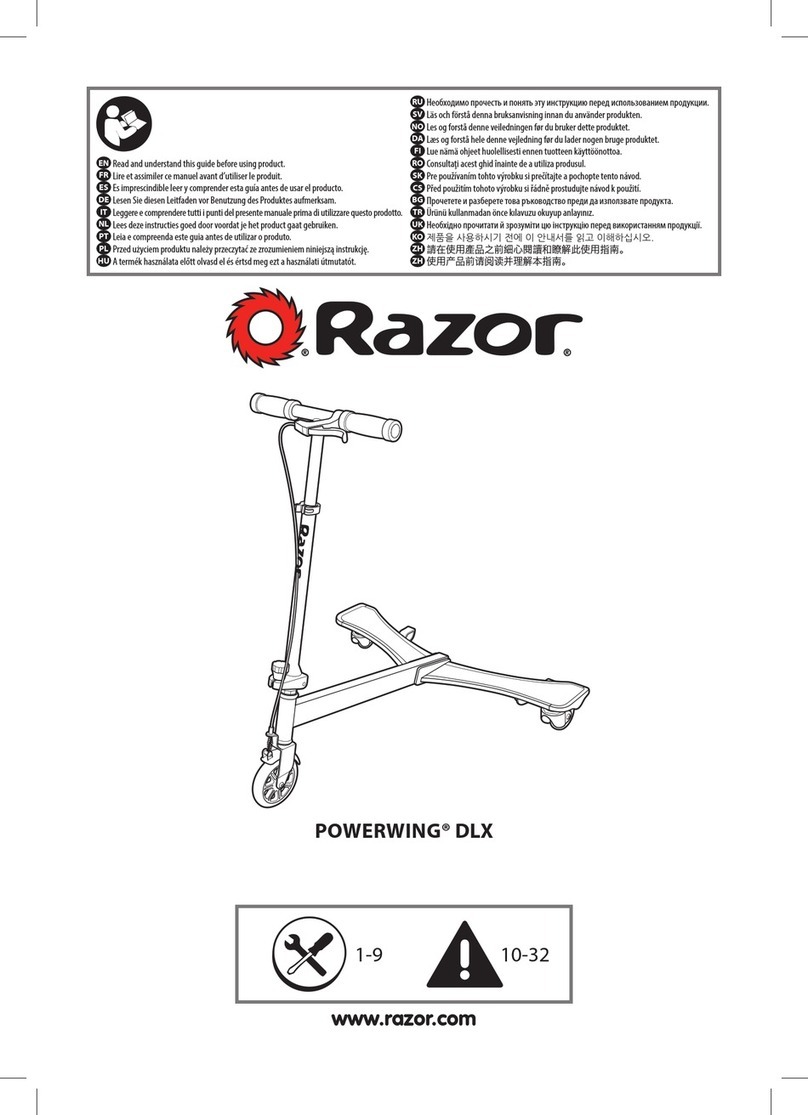Dawes Cycles ARC User manual

OWNER’S MANUAL

2
Contents
About this Manual
Important Safety Information
Dawes Arc Folding E-Bike Diagram
Operating Instructions
Important Notices, Helmets & Reectors (Safety)
Setup: Battery & Charging
Setup: Battery Checking
Setup: Folding Method
Setup: Saddle Position
Setup: Pedals
Setup: Derailleur System
Getting Started: Battery Charging
Getting Started: Pedal Assist System
Getting Started: Shifters
Getting Started: Riding Safely
Maintenance and Cleaning
Important Notices, Helmets & Reectors (Safety)
Battery Storage
FAQ
Service & Maintenance
Troubleshooting
3
4-5
6
7-19
7
8
9
10
11
12
13
14-15
16
17
18-19
20-23
21
22
23
24-28
29-33

3
About this Manual
This manual is written to help you to get the best performance, comfort, enjoyment and safety when riding your new
E-bike. The manual describes specic care and maintenance procedures that help protect your warranty and ensure
years of trouble free use. Please pay particular attention to the section on battery charging and maintenance.
It is important for you to understand the features and operation of your new E-bike so that you can get maximum
enjoyment with maximum safety. By reading this manual before you go on your rst ride, you’ll know how to get the most
from your new E-bike.
It is also important that your rst ride on a new E-bike be taken under a controlled environment, away from cars, obstacles
and other cyclists.
Cycling can be a hazardous activity even under the best circumstances, giving proper maintenance to
your E-bike is your responsibility as it helps to reduce the risk of injury. This manual contains many
“Warnings” and “Cautions” concerning the consequences of failure to maintain or inspect you E-bike.
Many of the Warnings and Cautions say “you may lose control and fall” Because any fall can result in
serious injury or even death, we do not repeat the warning of possible injury or death whenever the
risk of falling is mentioned.

4
Your E-Bike can provide many years of service, fun and tness, if you take good care of it.
Understand the features of your E-Bike and become aware of the challenges that you will meet on the road. There are
many things you can do to protect yourself while riding. We will oer many recommendations and safety tips throughout
this manual. The following are those we believe to be the most important.
Always Wear A Helmet!
Helmets signicantly reduce the possibility and severity of head injuries. Always wear a helmet that complies with
BS EN 1078:1997. Do not wear loose clothing that can become tangled in the moving parts of the E-Bike. Wear sturdy
shoes and eye protection.
Know your E-Bike!
Your new E-Bike incorporates many features and functions that have never been built into a bicycle before. Read this
manual thoroughly to understand how those features enhance your riding pleasure and safety.
Ride Defensively!
One of the most common cycling accidents is that when the driver of a parked car opens his door into a rider’s path.
Another common occurrence is when a car or another cyclist moves suddenly into your path. Always be aware of other
vehicles around you. Do not assume that the driver or the other cyclist see you. Get prepared to take evasive action or
stop suddenly.
Make Yourself Easy To See!
Make yourself more visible by wearing bright reective clothing. Keep your reectors clean and properly aligned. Signal
your intentions so that drivers and other cyclists can notice your actions.
Important Safety Information

5
Important Safety Information
Ride Within Your Limits!
Take it slow until you are familiar with conditions that you encounter. Be especially careful in wet conditions as traction
can be greatly reduced and brakes less eective. Never ride faster than conditions warrant or beyond your riding abilities.
Remember that alcohol, drugs, fatigue and inattention can signicantly reduce your ability to make good judgments and
ride safely.
Keep Your E-Bike In Safe Condition
Follow the inspection and maintenance guidelines beginning on page 21. Check critical safety equipment before each and
every ride.
Know The Law
Cyclists are required to follow the trac rules. Additionally, some communities regulate the use of motorized bicycles
regarding minimum age requirements and necessary equipment. Check with your local police department for specic
details.
Correct Frame Size
When selecting a new bicycle, the proper frame size is a very important safety consideration. Most full sized bicycles
come in a range of frame sizes. These sizes usually refer to the distance between the center of the bottom bracket and
the top of the frame seat tube.
For safe and comfortable riding there should be clearance of no less than 1-2 inches between the groin area of
the intended rider and the top tube of the bicycle frame, while the rider straddles the bicycle with both feet at on
the ground.
The ideal clearance will vary between types of bicycles and rider preference. This makes straddling the frame when o
the seat easier and safer in situations such as sudden trac stops. Women can use a men’s style bicycle to determine
the correct size of women’s model.

6
Dawes Arc Folding E-Bike Diagram

7
Important Notices, Helmets & Reectors (Safety)
Please read and understand these instructions completely before operating your E-bike to prevent serious injury to
yourself and others, and to prevent damage to the bike.
IMPORTANT NOTICES
• Always recharge the battery immediately after each use. Failure to do so may damage the battery.
• The charger can remain plugged-in for trickle-charge purposes during long periods of storage.
• For storage periods over 1 month, the battery should be checked and fully recharged before riding.
Helmets
Always wear a properly tted helmet which is comfortable, lightweight, has good ventilation and covers the forehead when
riding a bicycle.
It’s strongly advised that a properly tted bicycle safety helmet be worn at all times when riding your bicycle.
Reectors
Reectors are important safety devices which are designed as an intergral part of your bicycle. UK regulations require
every bicycle to be equipped with front, rear wheels and pedal reectors. These reectors are designed to pick up and
reect street lights as well as car lights in a way that helps you to be seen and recognised as a moving cyclist. Reectors
and their mounting brackets must be checked regularly to make sure they are clean, straight, unbroken and securely
mounted. Replace damaged reectors and straighten or tighten any that are bent or loose.
Your bicycle is supplied with one front reector, one rear wheel reector, and four pedal reectors. These are important
safety and legal requirements, and should remain securely tted in good, clean condition at all times. Periodically inspect
all reectors, brackets and mounting hardware for signs of wear or damage. Replace immediately if damange is found.
Some bicycles will require you to install your reectors onto your bicycle.

8
Setup: Battery & Charging
Battery Warning
• Do not immerse the battery in water
• Store in a cool, dry environment
• Only use the supplied ocial charger
• Do not tamper with the battery case or internal cells for any reason, instead consult the supplier
• Do not drop or throw the battery
• Keep out of reach of children
• The supplier and manufacturer are not responsible for breakages or other losses from misuse, incorrect tment or not
following the correct charging procedure
Power Charging
• Connect the charger to the battery, then plug into an appropriate mains power supply
• When charging, the charging indicator light shows red. Once fully charged, the charging indicator light shows green
Charging Warning
• You must use the charger provided;
• The charging time is 5-6 hours for a full charge;
• Never charge for more than 10 hours;
• Do not charge overnight;
• Keep away from ammable material while charging;
• If you notice any smell or smoke, stop charging and remove the plug immediately. Do NOT attempt to extinguish the re
with an extinguisher. Call 999 immediately.

9
Setup: Battery Checking
Fig A - Battery Lock (Located on on battery pack within the downtube)
Inserting, unlocking and removing the battery:
1. Release the lock lever from its clasp on the side of the
bike (as can be seen in step 4 on page 10)
2. Slot the battery into the downtube slot.
3. Insert the key and turn thekey clockwise, completing half
of a full turn to lock the battery pack into position.
4.To remove the battery, insert the key and turn it in an
anti-clockwise direction (unlocked), and use the handle on
the battery to pull it out from the downtube.
RoHS

10
Setup: Folding Method
Fig B - Dawes Arc folding method
1. Unlock the handlebar quick release lever and push
down down the handlebar to the lowest position.
2. Unlock the handlebar quick release lever and fold the
handle bar.
3. Fold the pedal (Spring clip release is located inside
the pedal body).
4. Release the lock lever from its clasp on the side of the
E-Bike.
5. Undo the lock lever and lift upwards to release inter-
nal locking pin. Fold bike in half. 1 2
5
4
3
Ensure the Bike is turned o before proceeding.

11
Setup: Saddle Position
Correct saddle adjustable is an important factor to get the
best performance and comfort from your E-Bike.
Up and down adjustment:
Your leg length determines the correct saddle height.
The saddle is at the correct height if you can just reach the
pedal with your heel, when the pedal is in it’s lowest position
and you are seated on the saddle. To check for correct sad-
dle height, perform the following:
1. Sit on the saddle, and place one heel on a pedal.
2. Rotate the crank until the pedal with your heel on it is
in the lowest position and the crank arm is parallel to
the seat tube. Your leg should be slightly bent and just
touching the center of the pedal. If this is not the case,
your saddle height needs to be adjusted.
Fig C - Dawes Arc Saddle

12
Pedal installation
Pedals come in pairs with “R” & “L” labels (Right and Left) (Fig D)
Corrently tighten the pedals to avoid thread damage and personal
injury (Fig E & F).
Setup: Pedals
Fig D - Right and Left Pedals
Fig E - Drive side R (Clockwise fastening)
Fig F - Non-Drive side L (Anti-Clockwise fastening)

13
Fig G - Rear Derailleur Top View
Fig E - Drive side R (Clockwise fastening)
Fig F - Non-Drive side L (Anti-Clockwise fastening)
Setup: Derailleur System
The derailleur system includes a rear derailleur, the shift levers, and the derailleur control cables, all of which must
function properly for smooth gear shifting to occur.
Rear Derailleur
Begin by shifting the rear shifter to largest number indicated, loosen the cable from the rear derailleur cable anchor bolt,
and place the chain on the smallest sprocket.
Adjust the high limit screw so that the guide pulley and the smallest sprocket are lined up vertically. Re-tighten the cable,
pull out any slack, and re-tighten the anchor bolt securely. Shifting through the gears, making sure that each gear is
achieved quietly and without hesitation. If
necessary, use the barrel adjuster to ne tune the cable tension by turning it the direction you want the chain to go. For
example, turning clockwise will loose the cable tension and move the chain away from the wheel, while turning
counter-clockwise will tighten cable tension and direct the chain to the wheel.
Fig H - Rear Derailleur Side View
* (H) Screw for
smallest freewheel
cog
* (L) Screw for
largest freewheel cog

14
When the ride is over or the battery is running low, charge
the battery immediately. This will help maximise it’s useable
life.
There are two ways to charge the battery:
1. Uninstall from the bike to charge it separately
2. Charge it directly without uninstalling it from the bike;
• Attach the charger connector charge slot located on
the battery, and the AC connector to a 230V power
source with the supplied UK plug.
• There is an LED indicator on the battery charger unit.
When the power is connected and the battery is charg-
ing, the LED indicator turns red. When the LED indica-
tor turns green, it means the battery is fully charged.
Li-ION recommended charge time: 3-5 hours
Do not charge continuously for more than 8 hours at
any one time.
After charging, unplug the input socket rst (from the
outlet), then unplug the output socket (from the bike).
The battery charger must have constant voltage.
Fluctuating voltage or uctuating power supply of any kind
may damage the battery storage cells so avoid charging
from a generator or o grid solar/wind source.
Getting Started: Battery Charging
Charging Port
Fig I - Battery Pack Switch and Charging Port

15
Getting Started: Battery Charging
Check the battery Pack before using for the rst time
• The battery pack is supplied partially charged. To ensure full battery pack capacity, completely charge the battery
pack for 7 hours before using for the rst time.
Battery Care
Even with proper care,rechargeable batteries do not last forever. Every time the battery is discharged and subsequently
recharged, Its relative capacity decreases by a small percentage. You can maximize the life of your battery by following
the instructions in this guide. Batteries should be fully charged immediately when they are fully depleted for the full
recommended charge times.
Li-ION recommended charge time: 3-5 hours
• For a complete,100% charge, leave the battery on the charger for one full hour after the charger indicator light turns
green.
• Never charge batteries for longer than 8 hours as damage will occur.
• Li-ion batteries do not have a ”memory”. Partial discharge/charge cycles will not harm the batteries’ capacity or
performance.
• The rated output capacity of a battery is measured at 77”F (25”C). Any variation in this temperature will alter the
performance of the battery, and shorten its expected life. High temperatures especially reduce overall battery life and
run time.
• Always be sure to turn the bike power switch to “OFF” after each use. If you leave the power switch in the “ON”
position, or your product has not been charged for a long period of time, the battery may reach a stage at which it will
no longer hold a charge

16
This bike has a pedal assisted drive system. In EU countries, it is known legally as “PAS” cycle or Pedal Assisted System.
The drive assisted system consists of a driving unit, a battery, a controller, and various electronic components (harness
wires, sensors and switches). It is important to know that when the assist system is turned on, the driving unit engages
to provide power only while you are pedaling. The amount of power provided by the drive unit depends on your pedal-
ing force and the assistance model/level you set with handlebar control unit at any time, if you stop pedaling, the drive
assistant will disengage. Upon all models/levels, the driving assisted system power reduces progressively and cuts o as
the bike reaches a speed of 25km/h,(15.5mph), or sooner if you stop pedaling. The drive assist re-engages when speed
drops below 25km/h, (15.5mph) as long as the pedals are turning.
• The E-Bike is equipped with multi-function display (see
photo at left.), Which shows the PAS level (5 levels),
‘Trip’ distance, total trip distance (ODO), battery level and
speed.
• To turn the E-Bike ON, hold the power button for
• 3 seconds
• Pressing the ‘-’ button will decrease the level of PAS, at
+1 you can pedal the bike normally with no pedal assist.
The drive system is not activated. holding down the (-)
button activates ‘Walking mode’, and allows the E-Bike to
travel at 6km/h, without pedaling.
• Pressing the ‘+’ button will increase the level of PAS, at
+6 the bike will have the maximum pedal assist. Range
dereases at higher pedal assist levels. Holding the +
button activates the screen’s backlight.
Fig J - PAS unit
Speed
PAS Level
Battery
charge
level
Trip
distance

17
Your E-Bike Is equipped with a Shimano drivetrain.
This consists of:
• A rear sprocket cluster, called a freewheel
• A rear derailleur
• One shifter
• One control cable
• One front sprocket called a chaining
• A drive chain
There are many dierent types of shifter mechanisms, each preferred for specic applications because of its ergonomic,
performance and price characteristics.
A downshift is a shift to a lower gear, or one which is easier to pedal. An upshift is a shift to a higher or faster gear, one
which is harder to pedal. For example, you can downshift to a lower gear to make pedaling easier on a hill. On the other
hand, you may upshift to a higher gear when you wish to go faster.
(* In simple terms ‘1’ is easier - ‘7’ is harder to pedal.)
Whether upshifting or downshifting, the derailleur system requires that the drive chain be moving forward and be under at
least some tension. A derailleur will Shift only if you are pedaling forward.
Caution:
Never move the shifter while pedaling backwards. Also do not pedal backwards after moving the shifter. Either of these
actions could jam chain and cause serious damage to the E-Bike.
Getting Started: Shifters

18
Getting Started: Riding Safely
Be familiar with all of the component parts of the e-bike and test all the electric functions before riding. Make sure all the
components of the bicycle are in good condition, the battery is charged and the tyres are correctly inated.
When riding, please follow the road laws as all other road vehicles, including giving way to pedestrains, stopping at red
lights and stop signs. For further information, contact the road trac authority or police department. Ride predicatably and
in a straight line. Never ride against trac laws. Use correct hand signals to indicate turning or stopping. Ride defensively.
To other road users, you may be hard to see.
General Riding Safety
• Concentrate on the path ahead. Avoid pot holes, gravel, wet road markings, oil, curbs, speed bumps, drain grates and
other obstacles
• Cross train tracks at 90 degree angle or walk your bicycle across.
• Exspect the unexpected such as opening car doors or cars backing out of concealed driveways.
• Be extra careful about intersections and when preparing to pass other vehicles.
• Use designed bicycle paths if possible.
• Familiarize yourself with all the bicycle’s fetures. Practice gear shifts, braking and the use of toe clips and straps, if tted.
Clothing
• If you are wearing loose pants, use leg clips or elastic bands to prevent them from being caught in the chain or gears.
• Wear proper riding attire and avoid wearing open toe shoes.

19
Bike Control
• Don’t carry packages or passengers that will interfere with your visibility or control of the bicycle.
• Don’t use items that may restrict your hearing.
• Do not lock up the brakes. When braking, always apply the rear brake rst, then the front. The front brake is more
powerful and if it is not correctly applied, you may lose control.
• Maintain a comfortable stopping distance from all other riders, vehicles and objects. Safe braking distance and force is
subject to the prevailing weather conditions.
• This bicycle is designed for on-road use only. It is not intended to be used for stunt riding, jumping, carrying passengers,
or riding o-road.
• If used incorrectly, the rider risks damage to components, injury or death.
Getting Started: Riding Safely

20
Maintenance and Cleaning
Technological advances have made the E-Bike and the components more complex than ever before. With the pace of
innovation increasing, this on-going evolution makes it impossible for this manual to provide all the information required to
properly repair and/or maintain your E-Bike. In order to help minimise the chances of an accident and possible injury, it is
recommended that you have any repair or maintenance performed by your local cycle store.
Equally important is that your individual maintenance requirements will be determined by everything from your riding style
to geographic location. Consult your dealer for help in determining your maintenance requirements. How much of your
E-Bike service and maintenance you can do by yourself depends upon your level of skill, experience, and special tool
availability.
Many E-Bike servicing and repair tasks require special knowledge and tools. Do not begin any adjustments or service on
your E-Bike if you have the slightest doubt about your ability to properly complete them. Improper adjustment or service
may result in damage to the E-Bike or in an accident which can cause serious injury or death.
Table of contents

